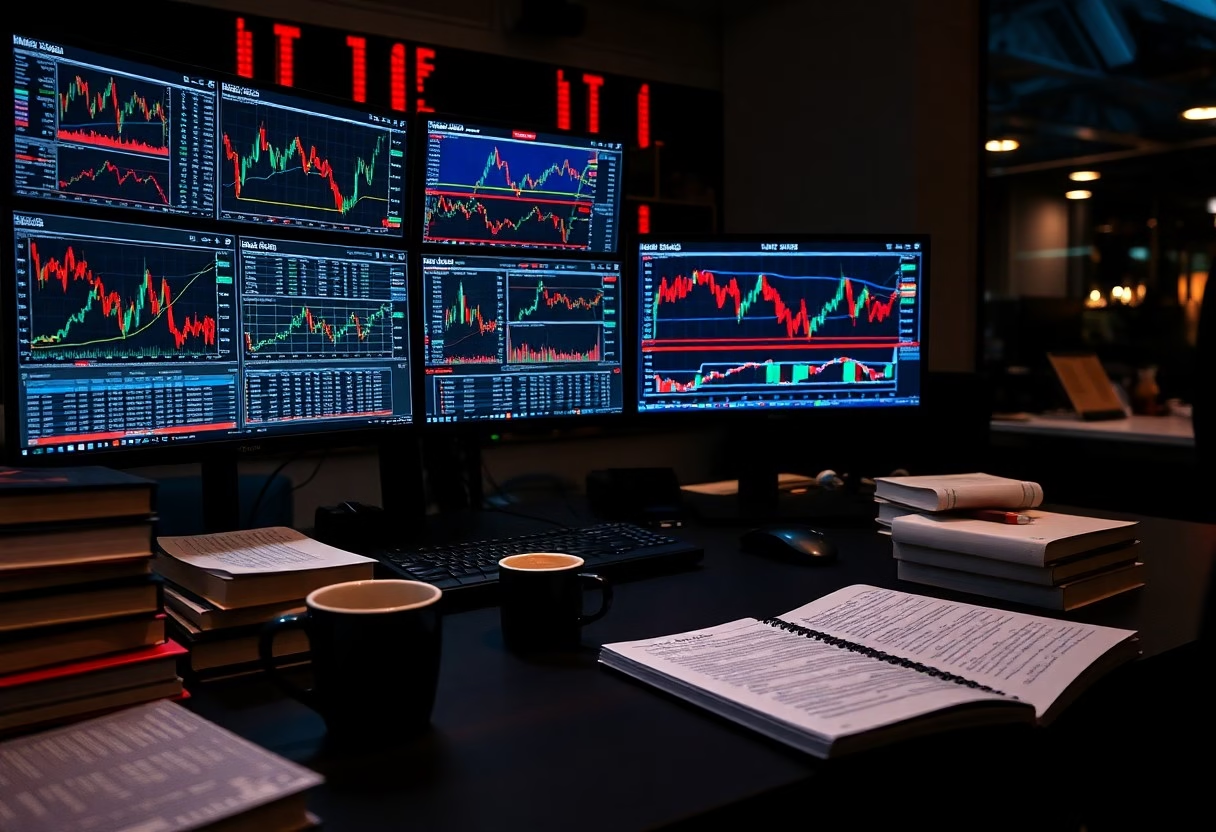You can enhance your trading game by mastering the art of backtesting your strategies. This process allows you to simulate your trading plans using historical data, revealing the potential strengths and weaknesses before risking your actual capital. By learning to test, tweak, and succeed, you will boost your confidence and decision-making skills. Dive into the details with insights like Here’s what I learned from backtesting hundreds of …, and build a robust approach to trading!

Key Takeaways:
- Develop a clear and structured framework for backtesting by defining your trading strategy parameters, objectives, and the criteria for success.
- Utilize historical data effectively by ensuring it is clean, comprehensive, and relevant to your strategy to enhance the accuracy of your backtest results.
- Analyze your backtest results critically, focusing on key performance metrics and making iterative adjustments to refine your strategy for improved performance.
1. Define clear rules for entry, exit, and risk management.
2. Collect historical market data relevant to your strategy.
3. Use software to simulate trades on past data.
4. Analyze performance metrics like profit, drawdown, and win rate.
5. Adjust parameters and retest to optimize results.
6. Validate strategy with out-of-sample or live paper trading.
Crafting Your Trading Hypothesis
Start by framing a solid trading hypothesis that clearly outlines the expected relationship between market conditions and your chosen trading strategy. This hypothesis should stem from thorough research and analysis, as it will guide your backtesting efforts. By identifying the reasoning behind the strategy, you increase the likelihood of understanding how various factors can impact your trades and performance.
Defining Your Goals and Metrics
Outline specific goals for your trading strategy, whether it’s achieving a certain return on investment, minimizing risk, or optimizing your winning percentage. Your defined metrics, such as Sharpe ratio, maximum drawdown, and profit factor, serve as benchmarks for measuring success. These parameters help you evaluate performance during backtesting and allow for objective comparison between strategies.
Choosing the Right Market Conditions
The right market conditions can significantly affect the performance of your trading strategy. Market environments can range from trending bull and bear markets to consolidation periods, each necessitating a different approach. For instance, if your strategy relies on momentum trading, you’ll want to test it in a trending market to see how it performs during upward or downward price movements. Conversely, mean-reversion strategies often thrive in ranging markets. When dicking out conditions, consider using historical data that reflects varied volatility and trading volumes to comprehensively assess your strategy’s robustness and adaptability. Tailoring your backtesting to these nuances gives you deeper insights and better preparedness for real trading challenges.
Gathering Historical Data: The Backbone of Backtesting
Your journey into backtesting truly begins with reliable historical data. This data forms the foundation upon which you’ll build, test, and refine your trading strategy. Without quality data, the results of your backtests could lead you astray, providing skewed insights that fail to translate in live trading. Focus on acquiring comprehensive datasets that are as extensive and accurate as possible, ensuring they cover the right time periods and market conditions relevant to your strategy.
Types of Data: Tick, Minute, Daily, Monthly
Understanding the different types of data available can significantly enhance your backtesting process. You have:
- Tick data – captures every single market transaction.
- Minute data – records price movements in one-minute intervals.
- Daily data – aggregates prices and volumes from each trading day.
- Monthly data – consolidates information at the end of each month.
- Fundamental data – includes economic indicators or earnings reports that impact market prices.
Recognizing the importance of each data type allows you to tailor your backtesting process effectively.
| Type of Data | Characteristics |
|---|---|
| Tick Data | Most detailed; shows each transaction. |
| Minute Data | Good for short-term strategies; one-minute intervals. |
| Daily Data | Best for medium to long-term strategies; daily close. |
| Monthly Data | Ideal for long-term trends; can filter noise. |
| Fundamental Data | Influences price; not price action but how it affects trades. |
Sources of Reliable Market Data
To backtest effectively, finding reliable data sources is paramount. Look for platforms that offer historical data that is not only precise but also timely. Popular sources include broker APIs, financial market data providers, and trading platforms that offer data subscriptions. Choosing the right source matters, as discrepancies in data can drastically alter your backtesting outcomes.
For instance, platforms like Quandl or Alpha Vantage provide extensive datasets ranging from stock prices to economic indicators at no cost or for a minimal fee. Additionally, many brokers offer their clients access to historical data through their trading platforms, sometimes even for several years back. Always vet your data source by cross-referencing with multiple platforms to ensure consistency. Quality data enhances your confidence in backtesting results, making them more conducive to real-life trading success.
Setting Up Your Backtest Environment
Creating the right environment for backtesting enhances accuracy and efficiency. Start by selecting a reliable trading platform that allows you to implement various strategies and simulate trades. Ensure that your setup includes access to comprehensive historical data, a conducive workspace, and the right mindset to analyze results critically. Consider using multiple timeframes and market conditions to get a well-rounded perspective on your trading strategy’s effectiveness.
Tools and Software: What Pros Use
Professional traders often rely on sophisticated tools and software to execute effective backtests. Popular platforms like MetaTrader, TradingView, and Amibroker provide extensive features for coding, testing, and analyzing your strategies. Additionally, many traders use programming languages such as Python and R for custom scripts, enabling them to tailor the backtesting process to their needs.
Configuring Your Trading Platform
Configuring your trading platform is a fundamental step in backtesting. Open the software and set it up for backtesting by importing your historical data and adjusting the timeframes, currencies, or other assets you wish to analyze. Enable features like strategic order execution and risk management rules, ensuring your backtest reflects real trading conditions. Pay close attention to settings such as spread, commissions, and slippage, which can greatly impact your results.
To effectively configure your trading platform, familiarize yourself with all available settings and features. For instance, ensure that your backtest uses the correct account size and risk parameters to simulate realistic scenarios. Utilize the platform’s customizable indicators to replicate your trading strategy’s logic accurately, and always run your backtests across varying market conditions. This way, you can identify potential weaknesses and optimize your strategy for better performance in actual trading events.
Analyzing Results: Metrics That Matter
After completing your backtest, analyzing the results is where the magic happens. Key metrics such as profit factor, maximum drawdown, and Sharpe ratio provide insights into the performance and risk of your strategy. A profit factor above 1 indicates a profitable strategy, while a lower maximum drawdown suggests better risk management. Aim for a Sharpe ratio greater than 1 for a balance between return and risk. These figures will help you gauge whether your strategy is worth trading live or needs some adjustments.
Interpreting Backtest Outputs: Success vs. Failure
Your backtest outputs can significantly impact your trading decisions. A strategy yielding consistent positive returns does not guarantee future success, as market conditions fluctuate. Pay attention to both the win rate and the average risk-reward ratio. A high win rate might look appealing, but if your risk-reward ratio is unfavorable, it may lead to long-term losses. Conversely, a lower win rate with a high reward potential can still be a viable option, reflecting a deeper understanding of market behaviors.
Common Pitfalls in Result Analysis
Avoid jumping to conclusions based on surface-level metrics from your backtest results. One common pitfall is overfitting your strategy to historical data, leading to misleading results. Another is the failure to account for transaction costs and market slippage, which can drastically change the net performance in real trading. Additionally, neglecting to analyze multiple market conditions can give you a skewed view of your strategy’s robustness.
Overfitting can happen when you tweak your strategy too often to optimize backtest outcomes, which often leads to a lack of adaptability in live environments. While reviewing your results, it’s important to focus on broad market conditions rather than isolating your analysis to a specific period. Factors such as inflation, geopolitical events, and economic cycles can all influence performance. Always incorporate realistic trading conditions like slippage and fees to ensure you’re evaluating your strategy under conditions that mirror live trading scenarios.
Iterating Your Strategy: The Cycle of Improvement
Backtesting isn’t just a one-off task; it’s a continuous process of iteration aimed at refining your trading strategy. Each test uncovers new insights, prompting you to adjust your approach based on the performance metrics you’ve gathered. Embracing this cycle allows you to fine-tune your strategy, ensuring that it evolves alongside market dynamics and enhances your overall trading effectiveness.
Tweak, Test, and Refine: Building a Feedback Loop
Your best results emerge from a structured feedback loop where each tweak is systematically tested. Start by making minor adjustments to your trading parameters based on the insights you’ve gleaned from your previous backtest. Implement these changes, run a fresh backtest, and analyze the outcome. This iterative cycle of tweaking, testing, and refining ensures that your strategy continuously improves, driven by data and experience.
Adapting to Changing Market Conditions
Markets are fluid and ever-evolving, necessitating that your strategies remain adaptive. As you backtest, incorporate various market conditions—such as trending, ranging, and volatile environments—into your analysis. This versatility prepares you to respond effectively to shifts in market sentiment, leading to more robust trading outcomes.
Consider the 2020 stock market crash as an example; many traders who solely relied on prior performance patterns struggled while those who adjusted strategies to account for sudden volatility often thrived. By backtesting under diverse scenarios and continuously adapting your strategy, you safeguard your trades against unpredictable shifts in market environments, enhancing your resilience and profitability as a trader.
To wrap up
So, as you investigate backtesting your trading strategy, keep in mind that the process involves testing, tweaking, and ultimately succeeding through diligent analysis. By utilizing historical data, adjusting parameters, and evaluating performance, you can refine your approach and boost your trading confidence. Approach backtesting as an ongoing learning experience that sharpens your skills and enhances your decision-making. Embrace the art of backtesting; it’s not just a task, but a vital component of your trading journey towards consistent profitability.

